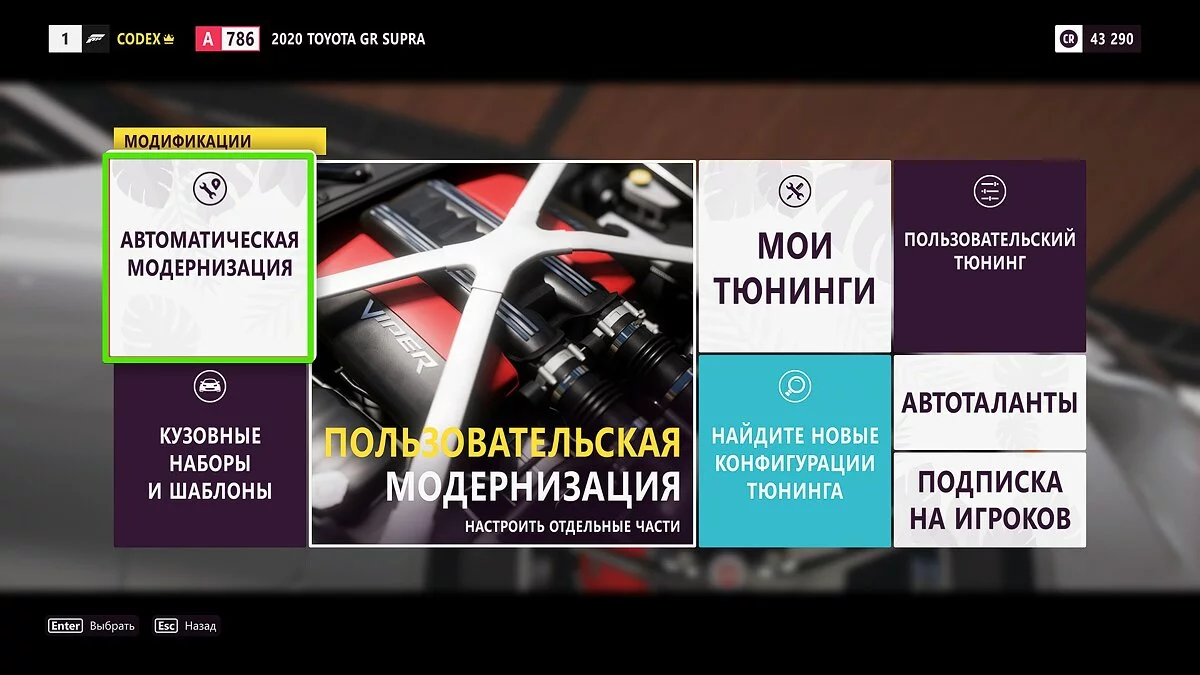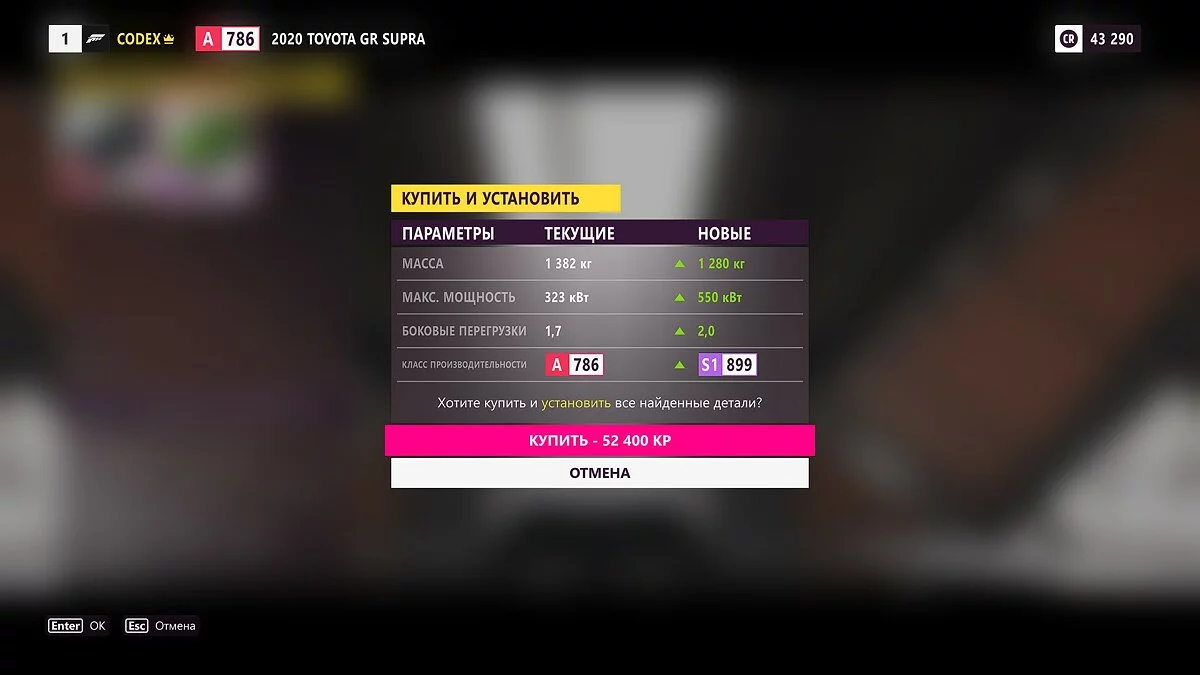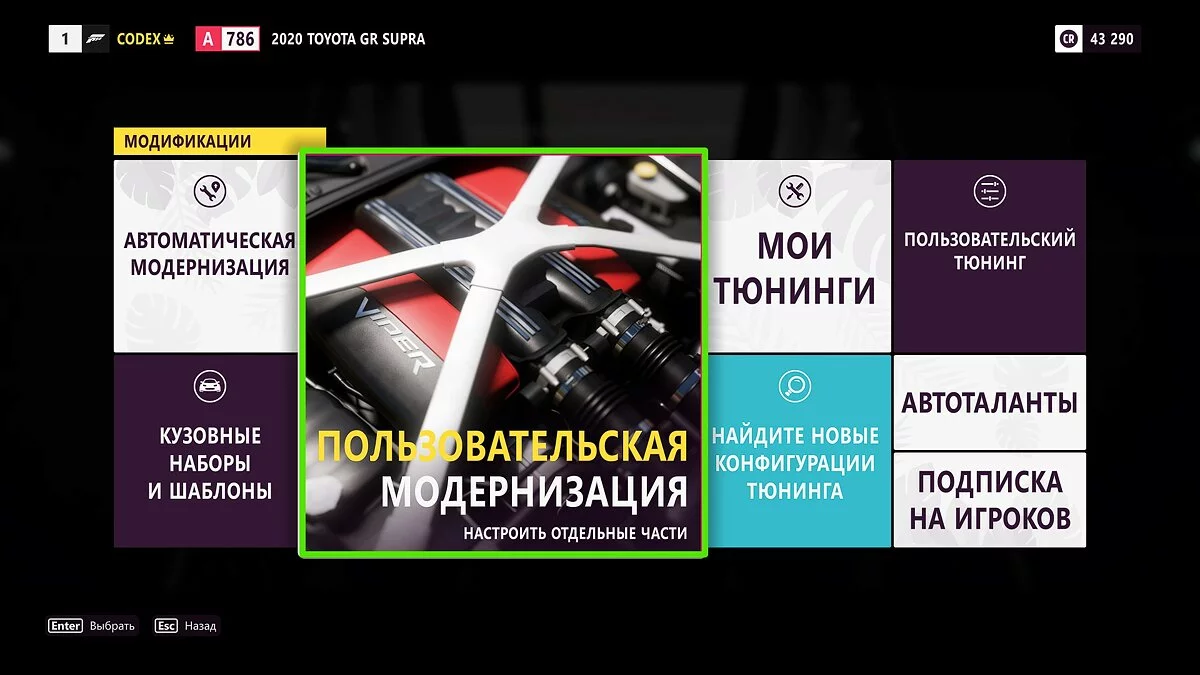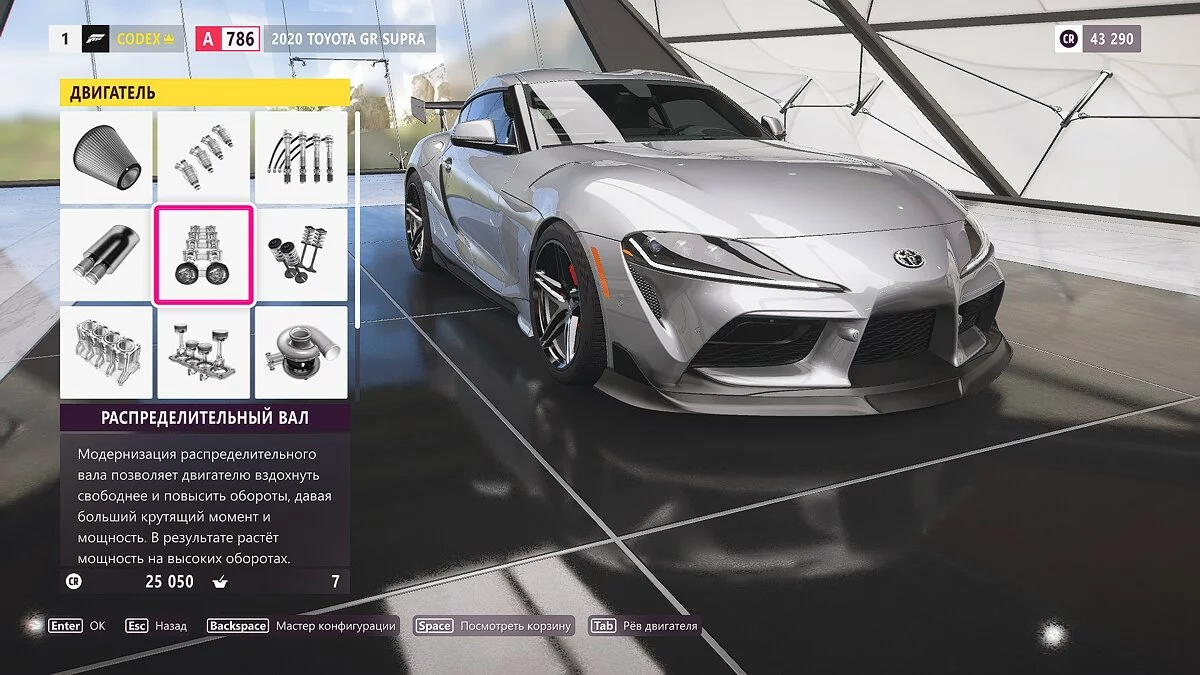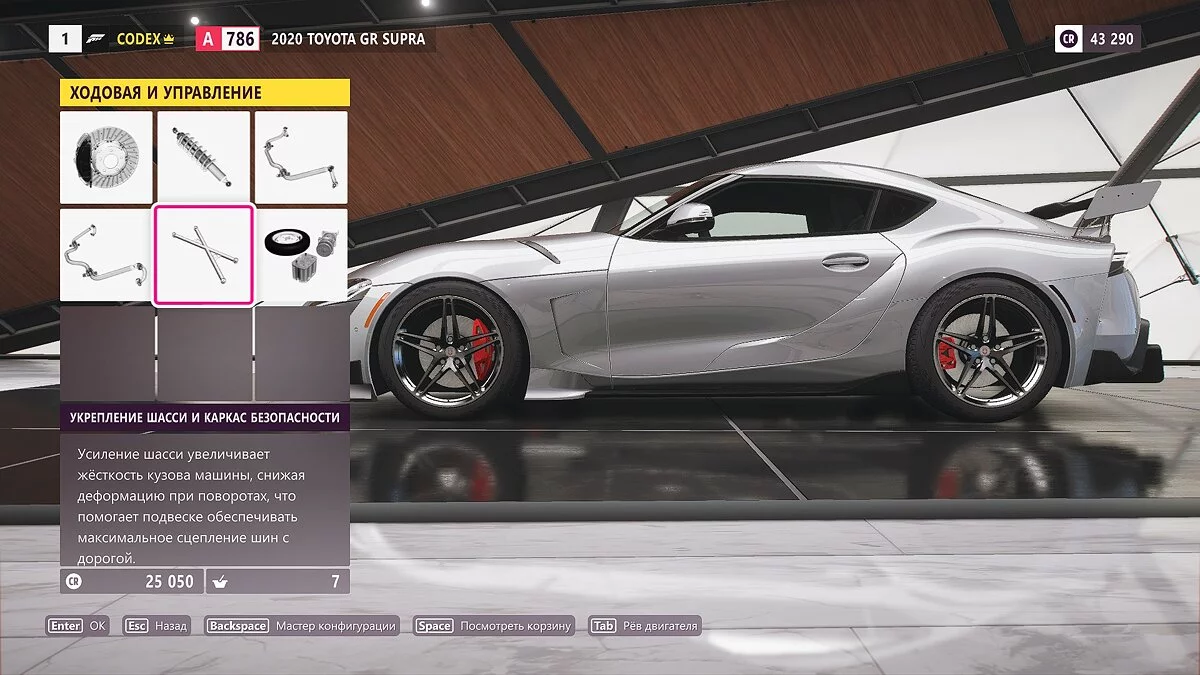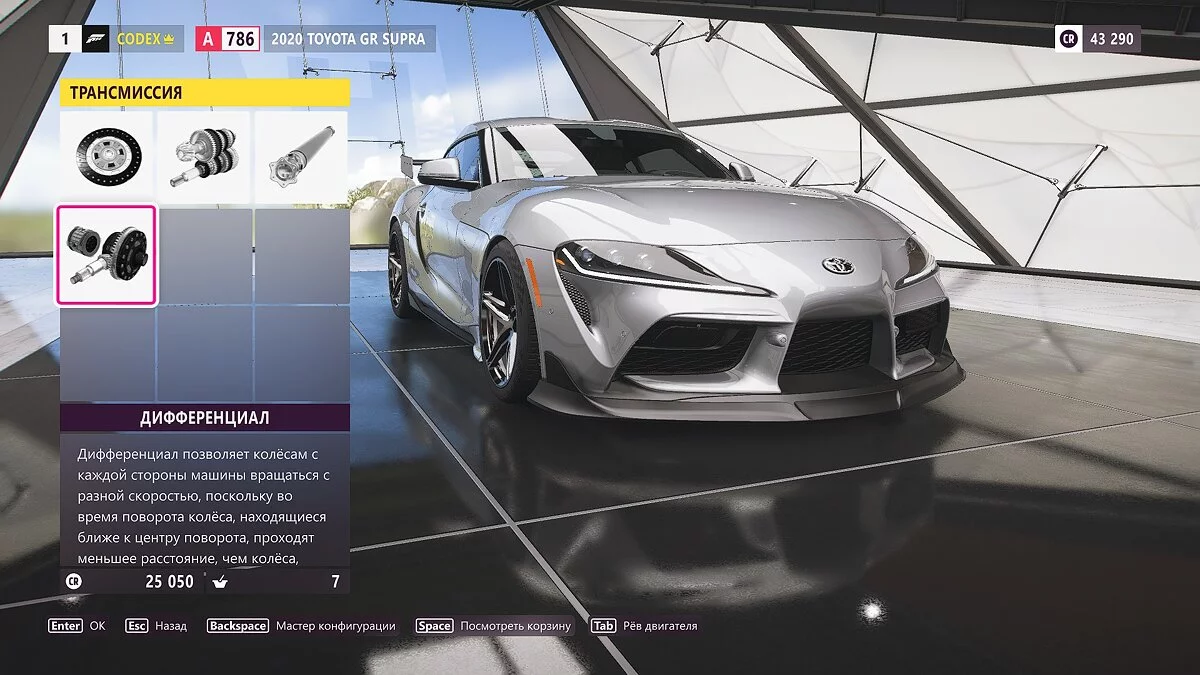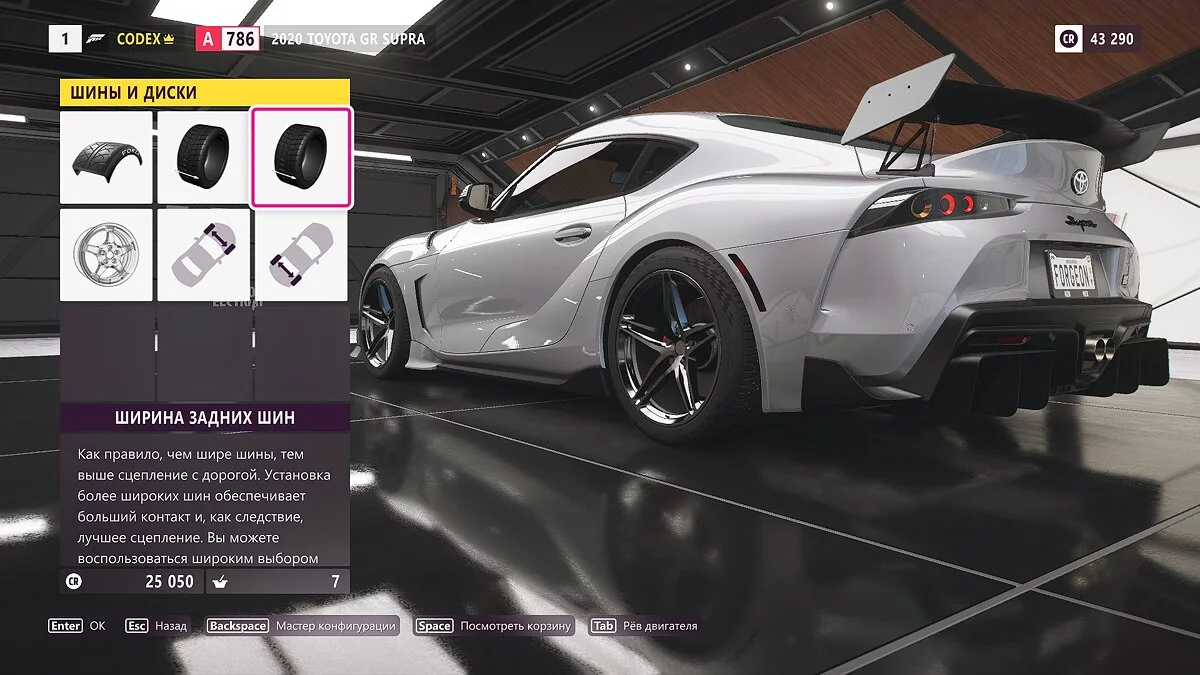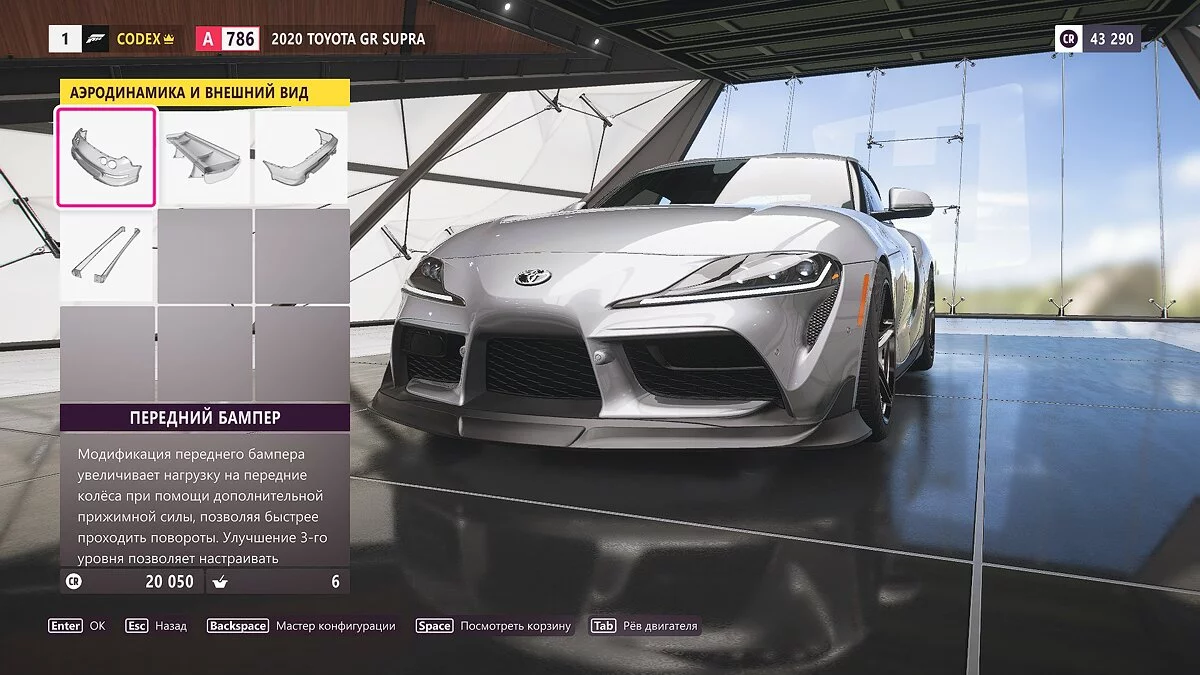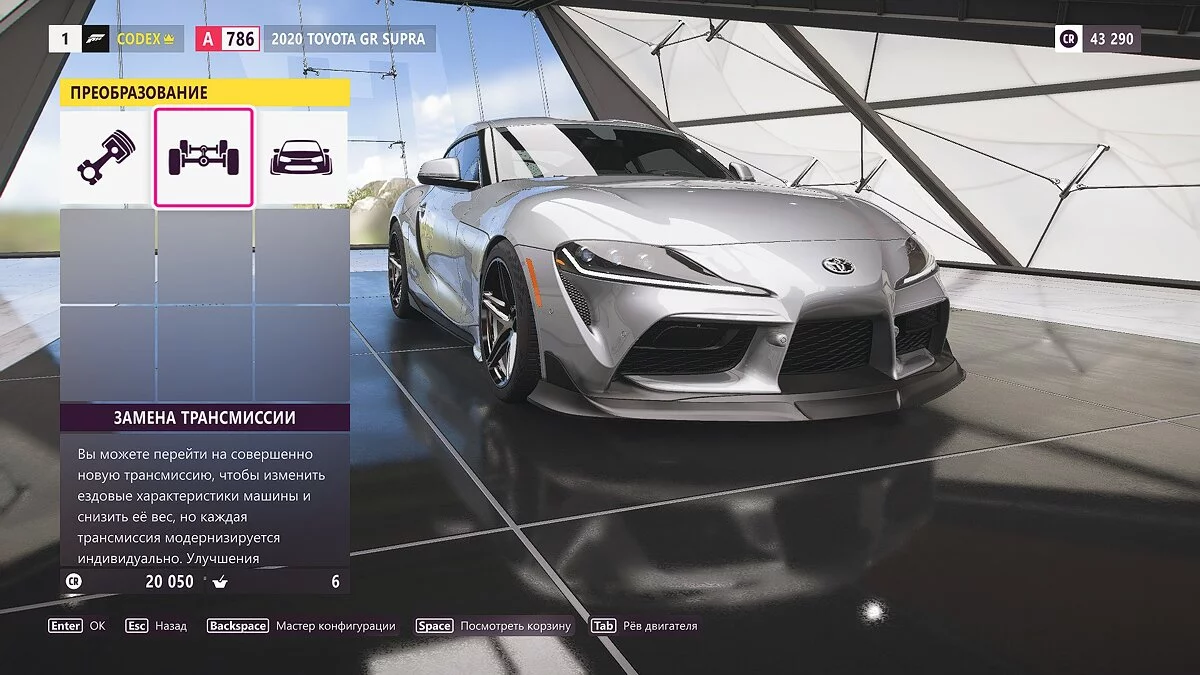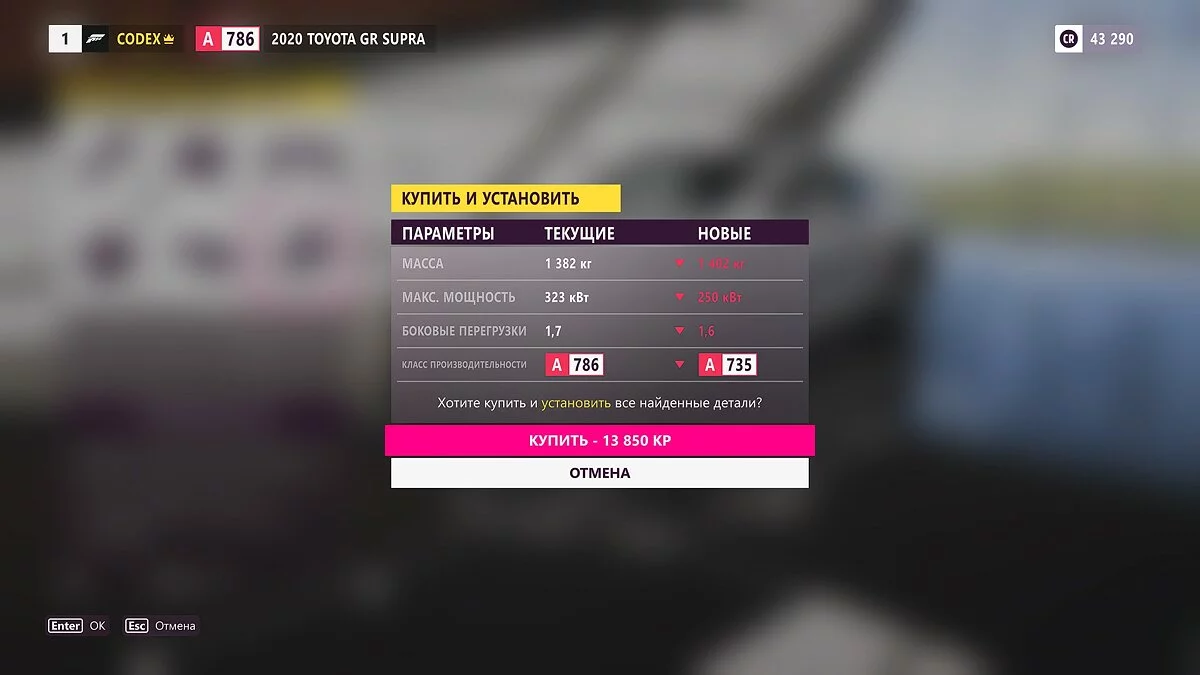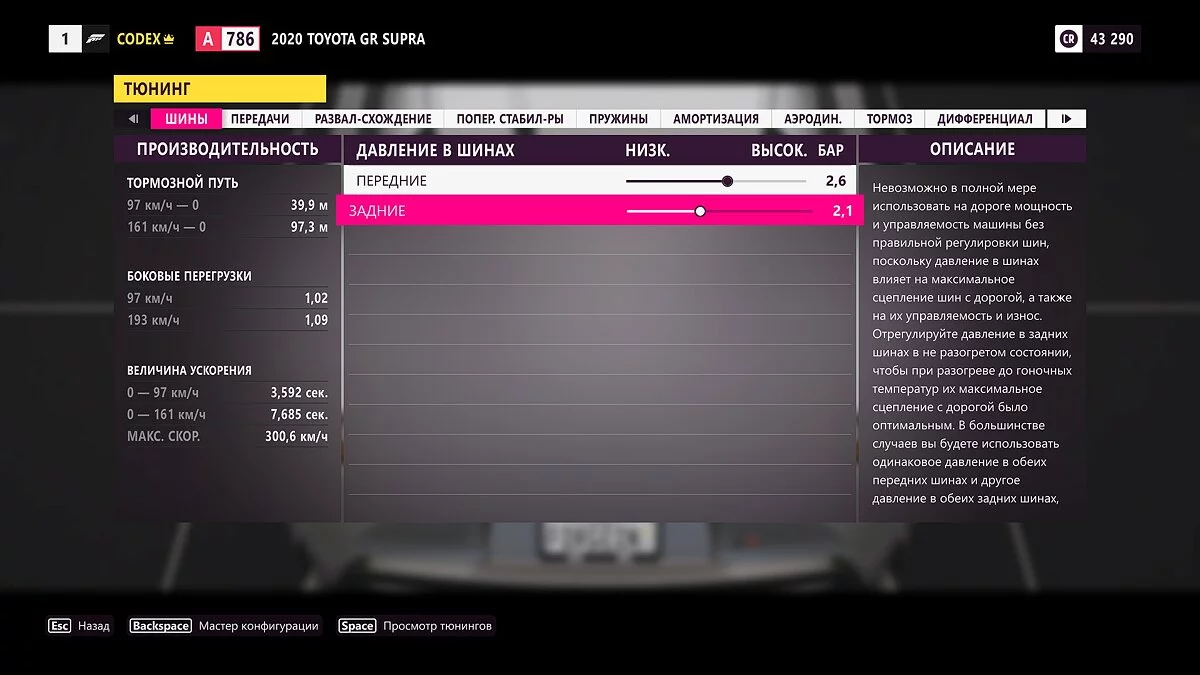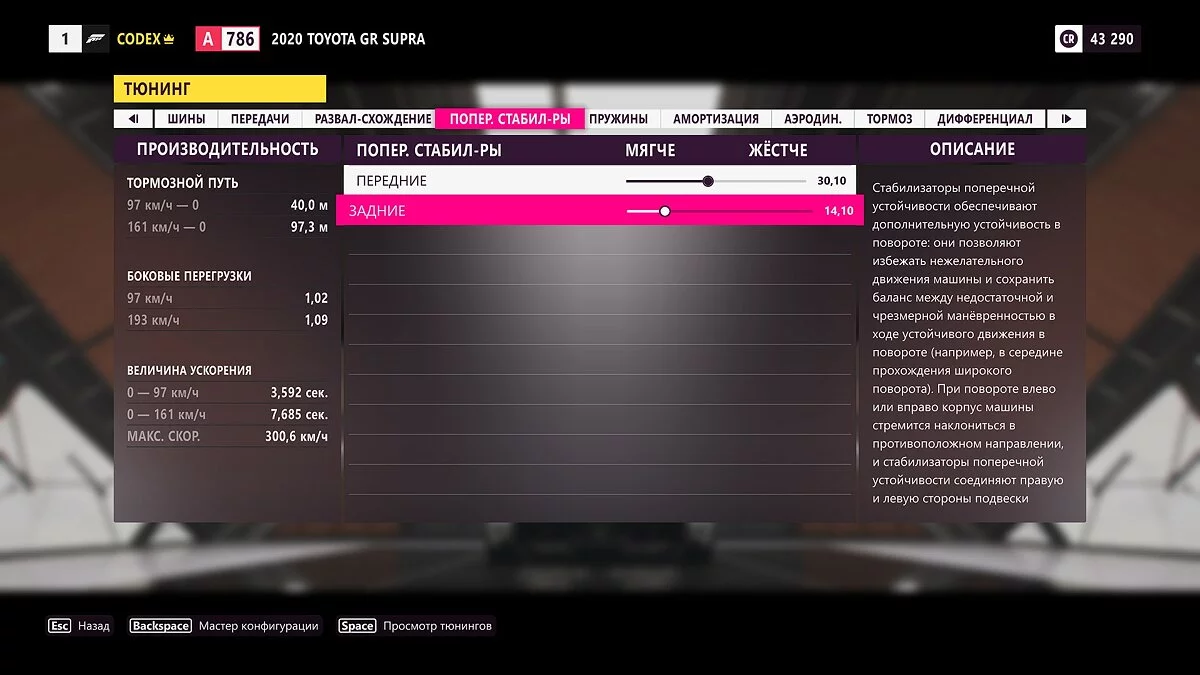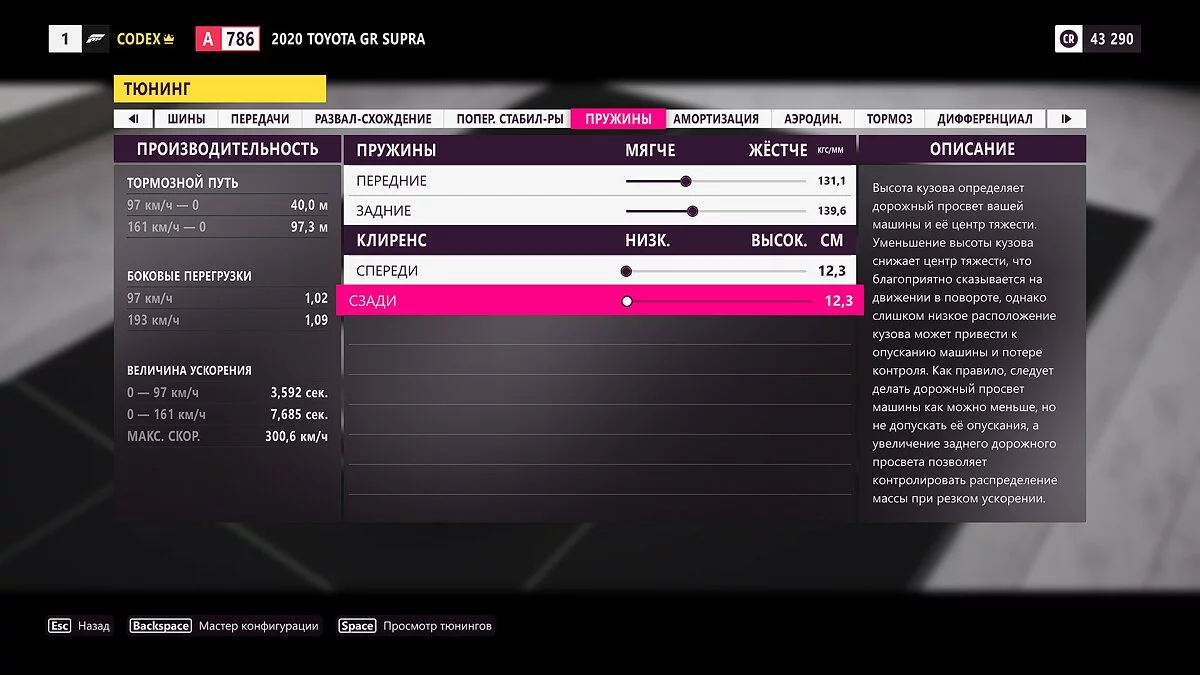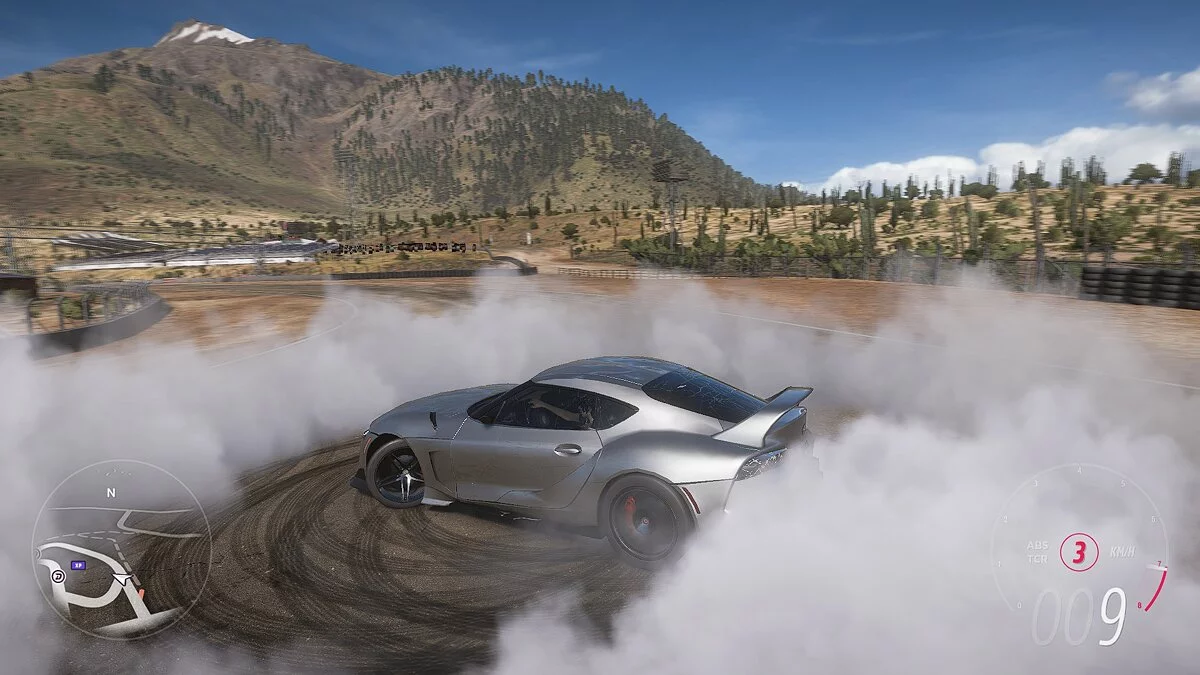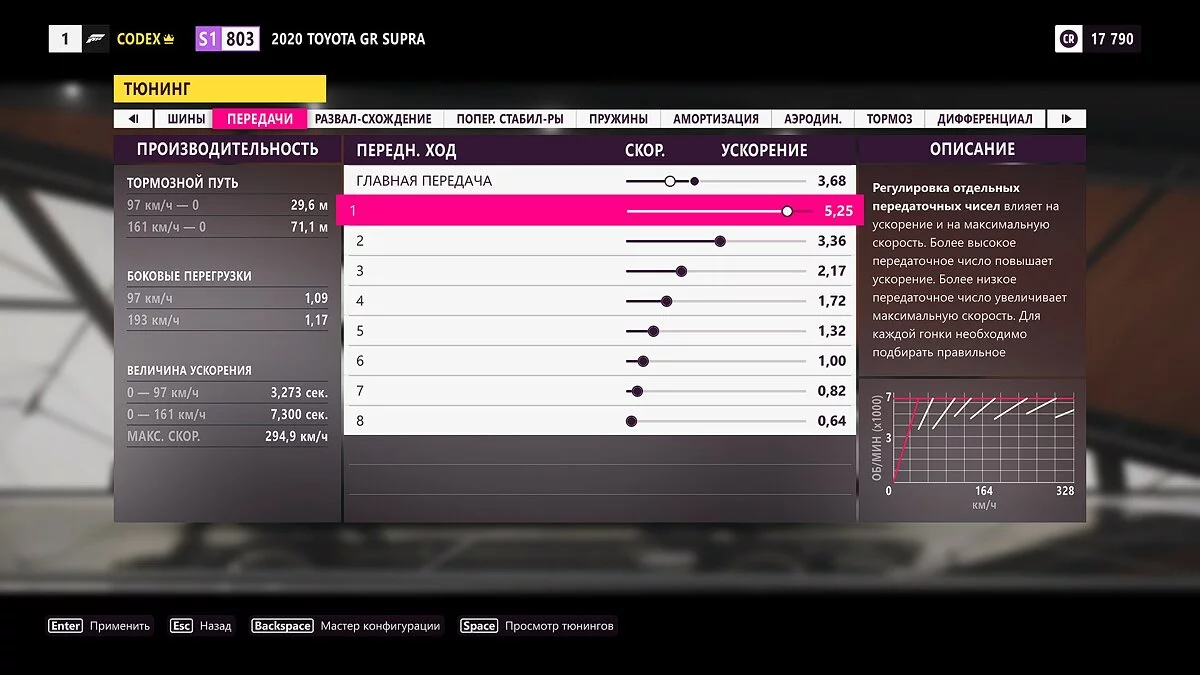Tuning Guide for Forza Horizon 5: How to Adjust Your Car's Specs
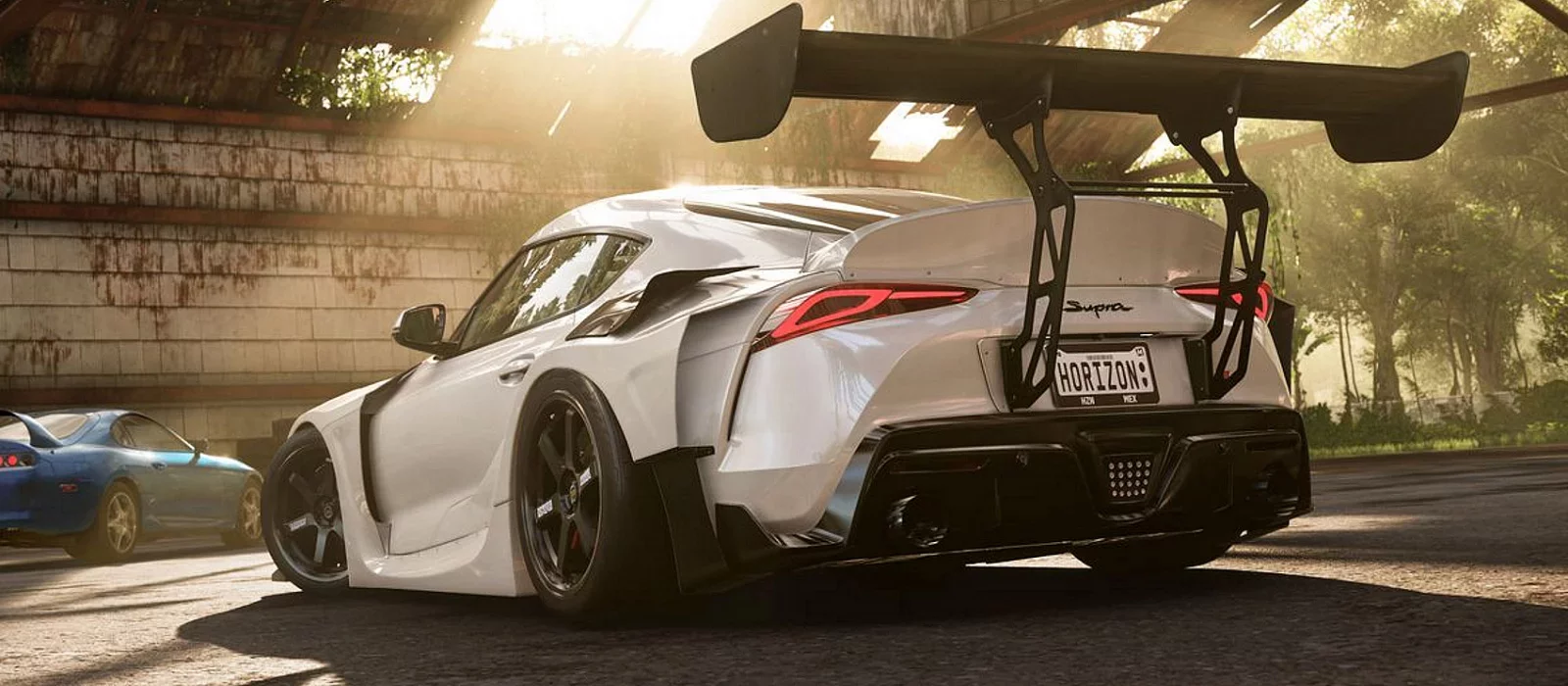
In the new installment of Forza Horizon, you can upgrade your vehicle by equipping it with more performance parts, as well as customize all of its specifications to your liking. In this guide, we'll cover tuning in Forza Horizon 5.
How to Open the Tuning Menu. Automatic Car Upgrades
To open the tuning menu, you don't necessarily have to be in one of your homes. You can change the basic parameters of the car right on the road. However, if you want to buy custom parts, you'll need to go home and enter the garage menu.
In the garage, select the Upgrades & Tuning option to open the extended car tuning menu. Here you will find a complete list of possibilities for upgrading cars.
Automatic Upgrades
Automatic upgrading saves a lot of time for setting up car indicators. The game will choose the optimal parts for you, suggest buying them, and install them on the car.
In this case, you will have to pay for the saved time, as the game will install the most expensive parts available for purchase at the moment. This feature will help beginners quickly upgrade their car without delving into the details of car tuning.
Custom Upgrades. What to Pay Attention to First When Tuning a Car
Custom tuning allows you to improve any of the six available elements of the car. Note that each individual part is intended for different types of races. Some parts are better installed for sprinting, while others are suitable for rally and drifting. For example, a racing or sports differential is not suitable for drifting, as it will not allow unlocking its full adjustment.
Engine
In this section, you can purchase twelve main components for your engine. Each new element can increase the power of the car while reducing other characteristics. Remember, the more power, the harder it will be for you to control your vehicle. This can be compensated by improving other elements of the car, such as purchasing new springs and shock absorbers, reducing the weight of the car, or installing aerodynamic elements.
Suspension and Handling
- Brakes — allow increasing the efficiency of braking;
- Springs and Dampers — such parts can increase or decrease ground clearance and tire contact with the surface, thereby affecting the car's handling;
- Anti-roll Bars (front and rear) — help increase the car's stability at high speeds;
- Chassis Reinforcement and Roll Cage — a somewhat questionable element that provides maximum tire grip on the road, but at the same time increases the overall weight of the car. We do not recommend purchasing it at the beginning;
- Weight Reduction — a lighter car accelerates faster but is less stable off-road.
Transmission
- Transmission — initially, install a sport transmission to unlock the adjustment of the final drive ratio. You can adjust this component at any time;
- Differential — installing a sport differential will unlock its adjustment during acceleration, and the same part for drifting or for rally will unlock its full adjustment;
- Driveshaft — the parts available for improvement at the initial stages have a very minor effect on your vehicle's characteristics. We recommend saving funds and improving other important elements of the car.
Tires and Rims
In this section, you can adjust the compound, width of the tires, and the distance between the front and rear tires. Such adjustments can increase or decrease the main indicators: handling, acceleration, and speed.
Aerodynamics and Appearance
In older racing simulators, players had access to a basic list of body kits for any car. In Forza Horizon 5, only specific body kits are available for each individual car: bumpers and rear wings. All of them are designed to improve the main characteristics of the car, adjusting speed and handling.
For example, the Toyota GR Supra is initially equipped with a factory rear wing, which improves the main speed indicator. If it is replaced with a rear wing from another manufacturer, the overall speed of the car will decrease, but other characteristics, such as handling, acceleration, and braking, will increase. Always pay attention to this when replacing factory parts of the car.
Conversion
Conversion is somewhat reminiscent of automatic tuning, only in this case you can choose the available elements yourself. Such elements include the engine, transmission, turbocharging, and a ready-made tuning package.
Before leaving the custom upgrade menu and installing all the purchased parts on the car, you will see a dialog box where you can compare the vehicle before and after tuning. If you are satisfied with the new characteristics of the car, press Buy.
Car Tuning. How to Adjust All the Characteristics of Your Car
As we have already noted, you can start tuning the car at any convenient time. To do this, simply open the main menu and go to the Custom Tuning section. First, you will have to familiarize yourself with the basic characteristics of the vehicle and understand how they affect your car.
Tires
In this window, you can track the performance of the tires (effective braking distance, lateral loads, and acceleration rate), as well as adjust the tire pressure.
The higher the tire pressure, the faster your car can accelerate. However, this reduces road grip. Low tire pressure has the opposite effect. To achieve better acceleration, we recommend setting a higher pressure on the front wheels.
Gears
Adjusting gears becomes available only after installing certain types of modifications. For example, the main gear adjustment is unlocked after installing a sport or racing modification.
In the gear menu, you can adjust the gear ratio, as well as the main gear setting. Gear ratios refer to the distance between gears. A higher gear ratio increases acceleration but reduces top speed.
Camber and Toe
As in real life, camber is necessary for adjusting the tilt angle of the tires. Negative camber increases tire grip on the road when turning but reduces grip when driving straight. Toe adjustment increases stability and reduces maneuverability when entering a turn.
Front caster is designed to adjust the tilt of the steering knuckle. A positive caster value increases stability when driving straight and also reduces the negative camber value of the wheels.
Sway Bars
Sway bars help maintain vehicle stability on turns and balance between understeer and oversteer. Reducing the stiffness of the sway bars decreases excessive maneuverability. To maintain vehicle stability on turns and during skidding, you need to find a balance of stiffness for each individual vehicle.
Springs
Adjusting the stiffness of the springs is almost no different from adjusting the stiffness of the sway bars. Reducing the stiffness of the rear springs will lead to insufficient maneuverability, and reducing the stiffness of the front springs will reduce overall vehicle maneuverability. Moreover, reducing stiffness on any axle will lead to instability of your vehicle during acceleration and braking.
When adjusting stiffness, pay attention to the engine placement in the vehicle. If it is located on the front axle, then the front springs should be made stiffer compared to the rear ones. This advice will help you improve the overall stability of the vehicle.
Remember that stiff springs are perfect for racing on asphalt, while softer springs are better for off-road racing.
Ride Height (Ground Clearance)
Lowering the ground clearance increases vehicle stability in turns. Low ground clearance can lead to the vehicle bottoming out with subsequent loss of control. When a vehicle enters a turn at high speed, with low ground clearance, the springs start to compress towards the ground. This is referred to as the vehicle bottoming out. In such a state, the vehicle becomes practically uncontrollable.
Damping
Adjusting the stiffness of the rebound changes the speed at which the vehicle's springs expand after each compression. The stiffer the shock absorbers are set, the more stable the vehicle will behave on a smooth surface. However, if you plan to drive off-road, we recommend making the shock absorbers softer.
Adjusting the stiffness of compression is opposite to rebound. Stiff compression of the shock absorbers increases transitional understeer. But the main thing is not to overdo it, as too stiff shock absorbers on compression will inevitably lead to vehicle instability.
Aerodynamics
Adjusting aerodynamics allows you to set downforce, ensuring optimal contact of the car with the ground and improving handling. To unlock this setting, you need to purchase racing modifications for the front and rear bumpers.
Brakes
In this section, you can adjust the brake balance between the front and rear wheels, as well as regulate the braking force. To ensure smoother braking, the brake balance should be shifted towards the rear wheels. If you need to stop your vehicle quickly in a race, shift the brake balance towards the front wheels.
Brake pressure allows you to increase or decrease the brake pedal travel. Excessively reducing the overall pressure in the brake system will result in the wheels no longer locking. In this case, the car will brake much slower. However, high pressure in the system can be far more dangerous: excessive increase in pressure will lead to premature wheel lock during braking, resulting in a loss of control over the vehicle.
Differential
The differential helps improve handling and power by allowing wheels on different sides of the car to rotate at different speeds. In front-wheel drive cars, you can only adjust the front differential. In rear-wheel drive cars — only the rear differential, and for all-wheel drive vehicles — the front, rear, and central differentials.
The acceleration setting allows for a quicker differential lock during acceleration. A high acceleration value will reduce the vehicle's handling. For the deceleration setting, we recommend using the basic parameter.
For all-wheel drive vehicles, you will also have the option to adjust the central differential. This affects how much power is transmitted to the front or rear wheels simultaneously.
The Best Drift Tuning for Forza Horizon 5
You can drift in Forza Horizon 5 with any car, but initially, the Nissan Silvia Spec-R is the best choice. It's not necessary to purchase this car specifically, as you can buy drift parts for any car in your garage.
Let's start with that. To ensure your car has good handling, can quickly enter and exit drifts, first and foremost, you need to install drift parts on it. To improve grip on the road, especially when sliding in turns or entering a drift zone, you need to increase the width of the tires for better road traction.
For this, go to the Custom Upgrade section and select Tires and Rims. Purchase the following parts:
- Drift tire compound (10,000 CR);
- Front tires 285 MM (3,000 CR);
- Rear tires 315 MM (3,600 CR);
- Set the maximum distance between the front and rear wheels (this option is usually set by default).
Go to the Handling and Control section. Here you need to buy:
- Springs and dampers for drifting (2,050 CR);
- Sport weight reduction;
- Racing brakes.
In the Transmission section, purchase the following parts:
- Racing transmission (2400 CR): This will unlock the adjustment of the final drive ratio, which is necessary for fine-tuning the car;
- Drift differential (2500 CR): Needed to adjust the acceleration and deceleration of the differential.
Exit the custom upgrade menu and take your car for a drive. You can already feel the difference, but to achieve better handling, you need to go to the Custom Tuning menu and adjust a few settings.
In the Gears section, find the final drive adjustment. By default, the value of the final drive is within three units. You need to increase this value to 3.60-3.80 units.
One of the most important parameters for drifting is ground clearance. It can be adjusted in the Springs — Clearance tab. The lower the ground clearance of your car, the better the grip on the road during drifts. It's important not to overdo it, as too low ground clearance can lead to the car bottoming out in corners at high speeds, resulting in a total loss of control. Start with a value of 12.3 on both the front and rear axles and increase it as necessary.
In the Brakes tab, set the brake force (pressure in the brake system) to 100%. If this value is too high, gradually reduce it. It's not necessary to adjust the brake balance in this case (50% on both the front and rear axles).
Adjusting the differential will help reduce wheel spin during acceleration and braking. We recommend starting with the maximum values (100%) for all parameters, then lowering them as necessary.
Other guides
- How to Unlock Cars for Free in Forza Horizon 5
- Rare Cars Map in Forza Horizon 5: Where to Find Them
- What Wheels, Pedals, and Gear Shifters Are Compatible with Forza Horizon 5
- Beginner's Guide to Forza Horizon 5: Tips for Exploring the World, Adjusting Difficulty and Upgrading Your Car
- The Fastest Cars in Forza Horizon 5
- Wie man viel Geld in Forza Horizon 4 verdient
- Effektives Driften in Forza Horizon 4: Beste Autos und Tuning-Einstellungen für das Driften
- Wie man ein Lenkrad in Forza Horizon 4 einrichtet: Was zu tun ist, wenn das Spiel das Lenkrad nicht erkennt
-
The Fastest Cars in Forza Horizon 5
-
Rare Cars Map in Forza Horizon 5: Where to Find Them
-
What Wheels, Pedals, and Gear Shifters Are Compatible with Forza Horizon 5
-
Beginner's Guide to Forza Horizon 5: Tips for Exploring the World, Adjusting Difficulty and Upgrading Your Car
-
How to Unlock Cars for Free in Forza Horizon 5
